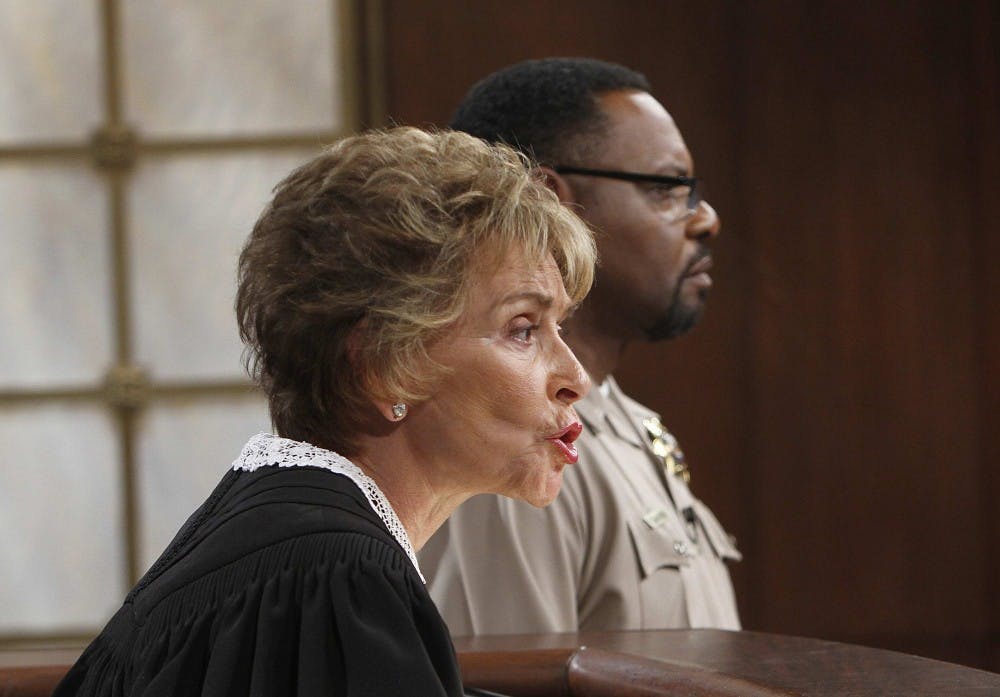“Fascism” is just one of many loaded words that seems to be thrown around too much these days. Whether or not the label can be rightly applied to anyone in the American political sphere, it is undeniable that totalitarian tendencies do rear their head in some aspects of civilian life.
One person who exemplifies this phenomenon maintains a fiefdom on daytime television, complete with a cast of unlucky subjects who plead for mercy in the face of a ruthless destroyer. In this syndicated cathedral, there is one word of law, one final judgement, and no jury or appeals. You’ve just entered the courtroom of Judge Judith Sheindlin, more commonly known by the name of her television program, “Judge Judy”.
Judy has been on television for over twenty years, since her first episode aired in September 1996. Her self-named show has been nominated for and won Daytime Emmys, and her long career has made the judge herself an icon in American pop culture.
But what really makes Judge Judy special, considering the saturated market of court television shows, is her fiery attitude and blunt demeanor. She is short with any litigants unfortunate enough to find themselves before her, and, despite her somewhat useful role as a mediator, Judy acts with quite the cantankerous attitude.
So why is Judge Judy so popular?
I think the reason behind Judy’s popularity is the purpose her show serves. Her television court represents a kind of swift judgement rarely seen in actual civil court and ignores the legal jargon and complexity of the latter. Judge Judy does not merely preside over the goings on of her court, she punishes wrongdoers and protects the righteous justice of the law. Add to that the appeal of watching usually lower-income citizens squirm under the watchful gaze of Judge Judy, and you begin to understand the equation that makes this particular court show so popular.
And of course, her show cannot escape a comparison to a totalitarian regime. Judy stands alone on a tall throne overlooking both of the litigants as well as a few dozen paid extras in the audience. She is the sole arbiter of the court, and her decision may come at any time after any amount of evidence is applied.
Furthermore, her show incorporates elements of actual courts to lend atmosphere to the show’s premise, but the portrayal comes across as authoritarian from America’s living room.
The show starts with a camera panning across the audience as they stand for Judge Judy and sit down at her behest, and continues with the judge hearing both sides of a case before coming to a determination. While both litigants plead their case, Judy interrupts them with requests for clarification or to dismiss whatever they say, with no opportunity for pushback.
To be fair, other court shows do the same thing. Judge Judy’s biggest competitor, "The People’s Court" with Judge Marilyn Milian follows the same general procedure and format, but is more of an ensemble cast, with Harvey Levin outside interviewing passersby and Doug Llewelyn interviewing the litigants after the case. “The People’s Court” also maintains a more generalized titled than the self-titled "Judge Judy".
Ultimately, Judge Judy’s ratings show that she is a popular personality, even if her style is more fitting of a drum head court in some banana republic. She represents our love of seeing others get served some kind of justice while being humiliated on national television.

